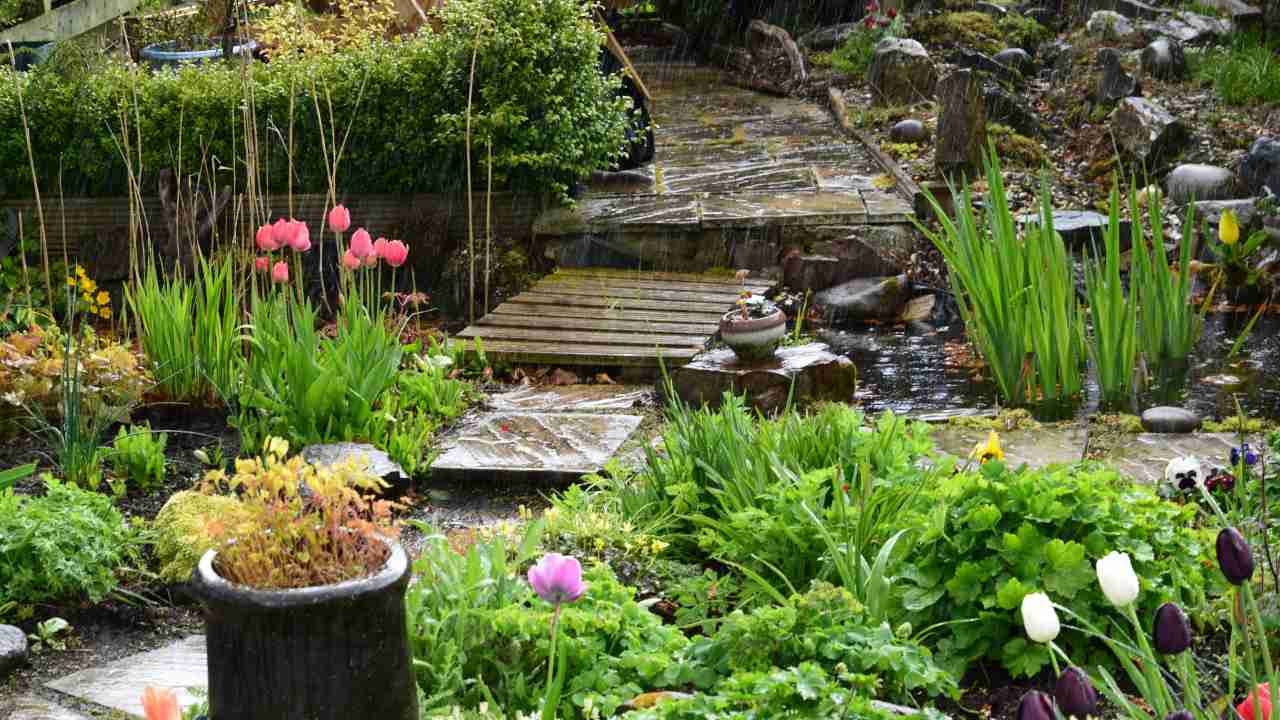Rain Garden Guide: Prevent Yard Flooding Fast

Tired of dealing with pooling water and soil erosion in your yard? Landscaping with a rain garden offers an attractive, eco-friendly way to manage stormwater while enhancing your outdoor space. Designed to capture and filter rainwater, these gardens prevent flooding, reduce runoff pollution, and support local biodiversity—all while adding beauty to your property.
What Is a Rain Garden and How Does It Work?
A rain garden is a shallow, planted basin designed to collect and absorb excess rainwater from impervious surfaces like rooftops, driveways, and patios. By allowing water to filter through deep-rooted native plants and soil layers, a rain garden reduces the strain on storm drains while improving water quality.
Unlike traditional drainage solutions, which often divert stormwater into sewers or low-lying areas, a rain garden naturally slows water down, preventing erosion and flooding. Plus, it acts as a filtration system, trapping pollutants before they reach local waterways.
Key Benefits of a Rain Garden
Prevents Flooding and Erosion
By directing rainwater into a designated area, a rain garden helps prevent excess water from pooling in low spots, protecting your home’s foundation and landscape.
Improves Water Quality
Stormwater runoff often carries pollutants like fertilizers, pesticides, and debris. A rain garden acts as a natural filter, allowing cleaner water to percolate into the ground.
Supports Biodiversity
Rain gardens provide essential habitats for pollinators, butterflies, and birds. The use of native plants ensures a balanced ecosystem that thrives with minimal upkeep.
Adds Curb Appeal
A well-designed rain garden enhances the aesthetic of your landscape with a mix of colorful flowers, grasses, and shrubs—proving that functional design can also be beautiful.
Step-by-Step Guide to Building a Rain Garden
Step 1: Choose the Right Location
- Identify areas in your yard where water naturally collects.
- Ensure the location is at least 10 feet away from your home’s foundation to prevent seepage.
- Avoid placing the garden in areas with poor drainage or compacted soil.
Step 2: Determine the Garden’s Size and Shape
- Measure the surface area draining into the rain garden.
- A typical rain garden is 4 to 8 inches deep and ranges from 100 to 300 square feet.
- Choose a shape that complements your yard’s existing landscape.
Step 3: Prepare the Soil
- Conduct a soil infiltration test by digging a small hole and filling it with water to see how quickly it drains.
- Improve drainage by incorporating compost, sand, and organic matter into the soil.
Step 4: Select Native Plants
- Choose a mix of water-tolerant plants for the center and drought-resistant plants for the edges.
- Ideal options include:
- Flowers: Black-eyed Susan, Purple Coneflower, Cardinal Flower
- Grasses: Little Bluestem, Switchgrass
- Shrubs: Winterberry, Red Twig Dogwood
- Native plants require less maintenance, attract pollinators, and thrive in local climate conditions.
Step 5: Install and Maintain Your Rain Garden
- Dig a shallow depression and shape the garden according to your plan.
- Layer the soil with a mix of compost and sand to encourage water absorption.
- Place plants in designated areas, ensuring proper spacing for growth.
- Cover the surface with mulch to retain moisture and suppress weeds.
- Water the garden regularly for the first few weeks until plants establish deep roots.
Case Study: A Homeowner’s Rain Garden Success
Sarah, a homeowner in a flood-prone neighborhood, struggled with persistent puddles in her backyard. After consulting a landscaper, she installed a 150-square-foot rain garden filled with native wildflowers and shrubs. Within a few months, she noticed a significant improvement—no more standing water, healthier plants, and an increase in butterflies and birds visiting her yard. Thanks to her rain garden, Sarah now enjoys a vibrant, flood-free landscape while contributing to local water conservation efforts.
Ready to Build Your Own Rain Garden?
Transform your yard with a rain garden and take control of stormwater before it becomes a problem. Whether you're looking to prevent flooding, improve water quality, or enhance your landscape, a rain garden is a sustainable and visually appealing solution.
For expert guidance and professional landscaping services, contact Avalanche Landscaping today and start your garden installation project!

